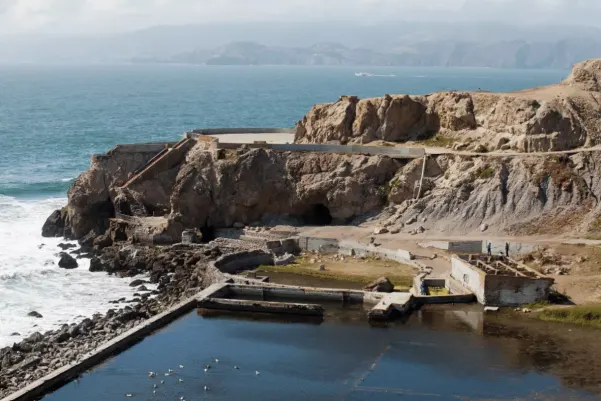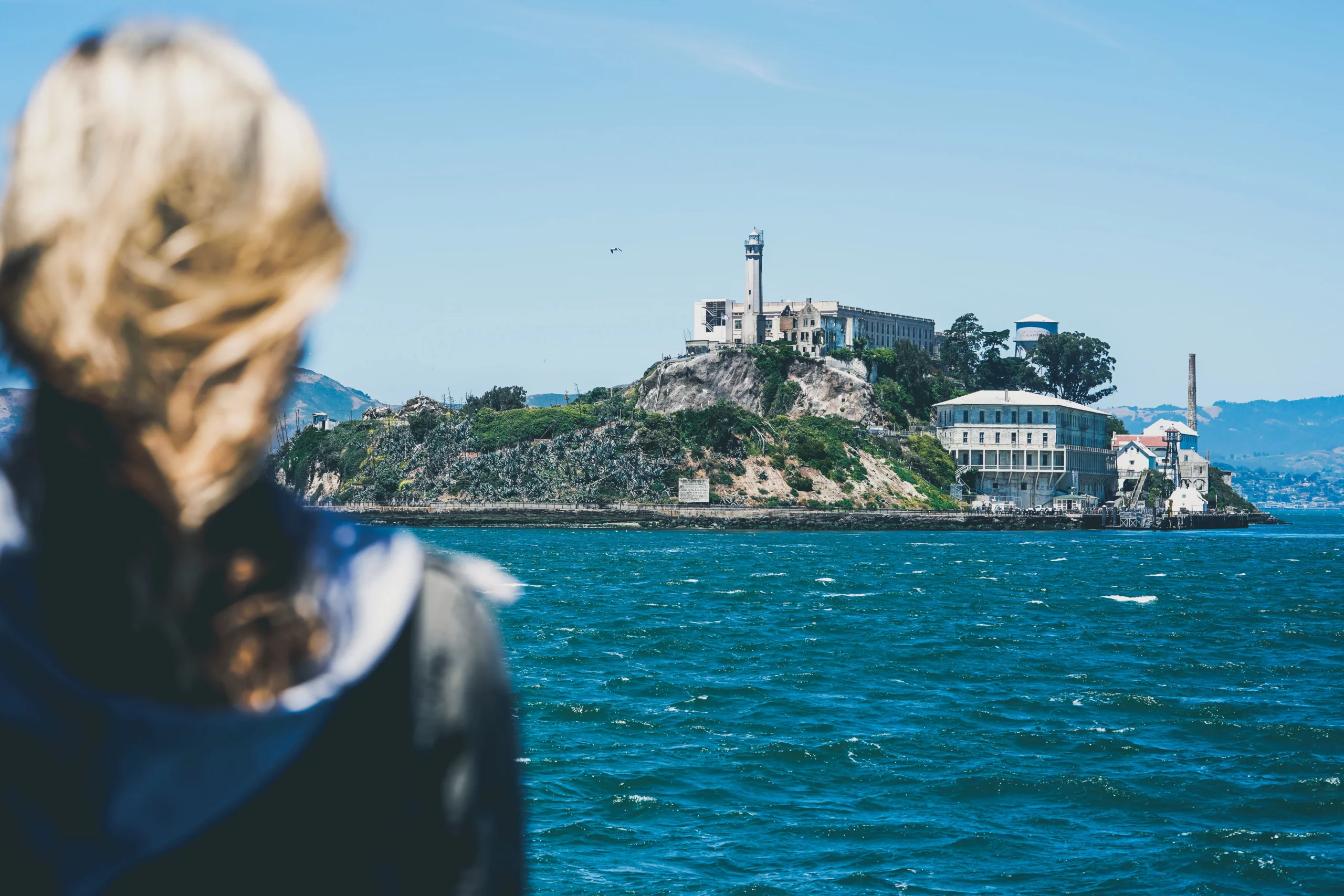Sutro Baths

Former San Francisco Mayor (1894-1896), and entrepreneur, Adolph Sutro opened his privately owned Sutro Baths to the public as the largest indoor swimming pool establishment in the world. The enclosure was built of glass, iron, wood and a reinforced concrete structure on a small beach inlet below the Cliff House, which Sutro also owned during the time. Today the Cliff House and Sutro Baths site are part of the Golden Gate National Recreation Area and operated by the United States National Park Service.

Morning Guided San Francisco Sightseeing Tour
Most complete and entertaining San Francisco city tour available. Stops to explore Golden Gate Bridge, Palace of Fine Arts, Land’s End, and Twin Peaks.

Guided Alcatraz and San Francisco City Tour
This full-day guided tour breaks you into Alcatraz and explores the Palace of Fine Arts, Golden Gate Bridge, Land’s End and Twin Peaks.
Visitors to the baths had a choice of 7 different swimming pools – one fresh water and 6 salt water baths ranging in temperature – a museum featuring Mr. Sutro’s large personal artifacts from his travels, a concert hall with seating for 8,000 and an ice skating rink. The 6 salt water baths would be replenished during high tides when the ocean water would flow directly into each pool from the nearby ocean. During low tides a powerful turbine water pump built in a cave at sea level would pump the ocean water into each bath replenishing the 2 million U.S. gallons of salt water. The baths were once serviced by the Ferries and Cliff House Railroad which ran along the coast of Lands End overlooking the Golden Gate Bridge.
The Sutro Baths were extremely expensive to operate and struggled for years with the high operating and maintenance costs. A fire destroyed what was left of the bath house shortly after its closure in 1966. Today the structural remains consist of concrete walls, blocked off stairwells and passageways. The ruins of the once monumental bath house is open to the public and posted with a warning sign noting that large waves and tidal changes are a safety risk. Visitors to the Cliff House can view artifacts, pictures and historic facts about the Sutro Baths housed within the same building.